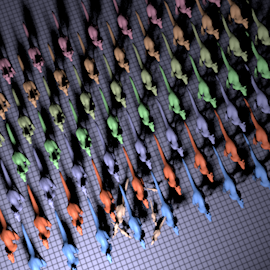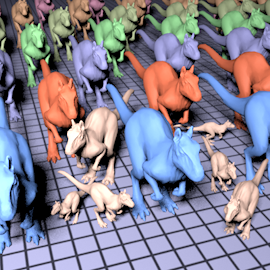Assignment 2: Lazy K-D Tree
Due: Thursday April 26th, 11:59PM
In this assignment, you will improve pbrt's implementation of the k-d tree accelerator. As described in Chapter 4 of the textbook, before rendering, pbrt constructs a k-d tree containing all geometric primitives in the scene. This approach can be inefficient for several reasons. First, as you will observe in this assignment, building a complete k-d tree for a scene containing many geometric elements can be very costly. Depending on the camera's location and how objects in the scene occlude others from view, it is possible that many k-d tree nodes created in the initial build process may never be hit by any rays. In this case, both computation spent building these nodes and, more importantly, the memory used to store them is wasted. Your objective in this assignment is to modify pbrt's k-d tree accelerator to lazily build the acceleration structure as rays are shot through the scene.



The images above the same scene rendered from three different camera positions. The scene contains 76 killeroo objects. Each killeroo is a subdivision surface shape with base mesh consisting of 8316 triangles. Six of these killeroos (the baby killeroos) undergo one level of subdivision, so the resulting meshes contain 33262 triangles. In total, the killeroos constitute 775,692 triangles.